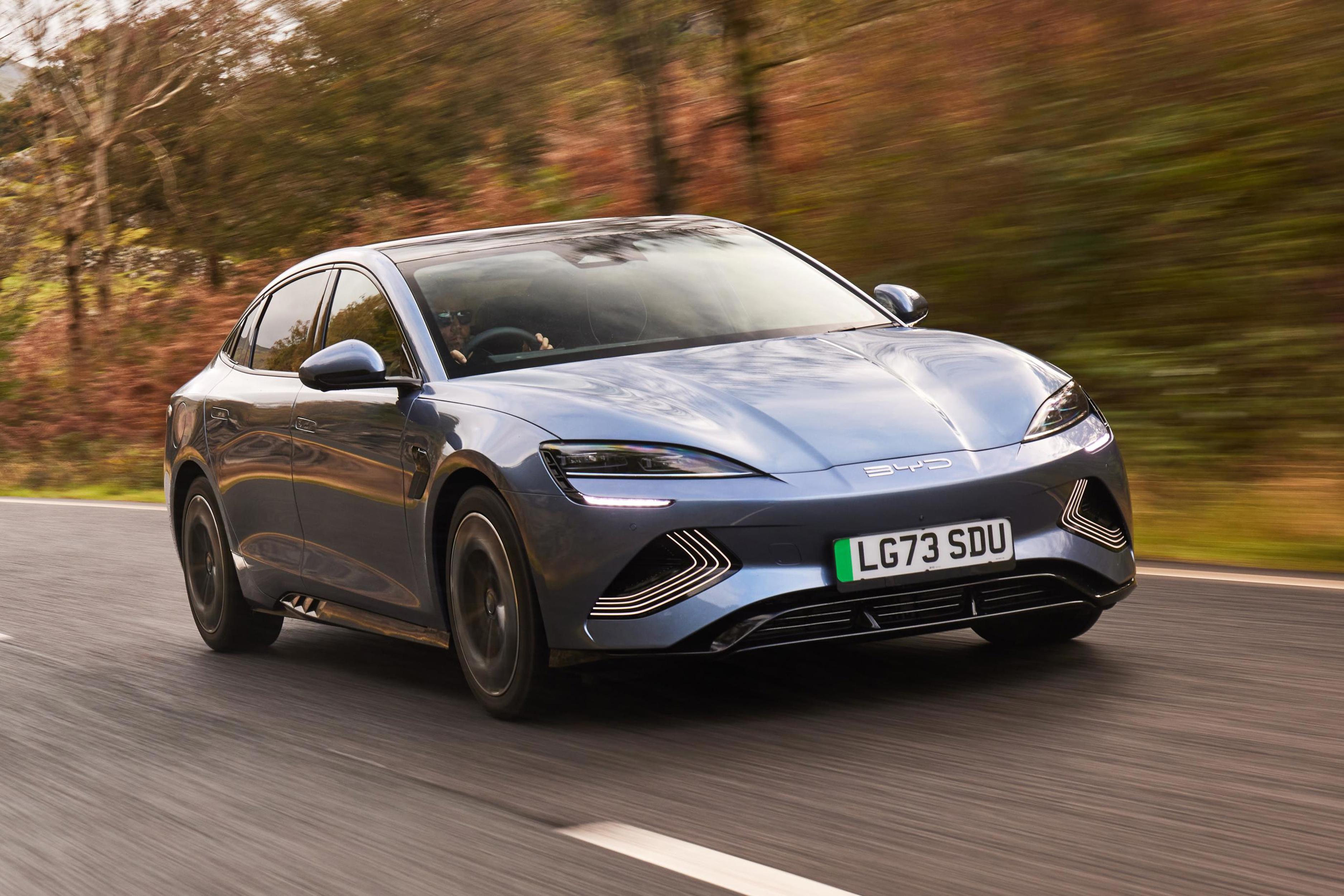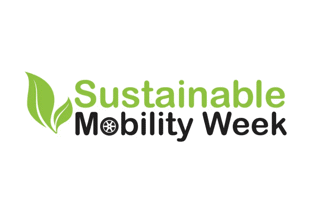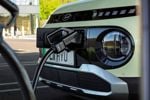By Paul Hollick, chair of the Association of Fleet Professionals (AFP)
For 2024, the AFP has been discussing what we call the “State of the Nation”, by which we mean the key issues that are facing fleets at this point in time. Here are those we agree are the 10 most pressing, together with some of our ideas about tackling them.
Maintaining momentum in the electric car revolution
What has been achieved over the last few years in the electrification of company cars has been nothing short of spectacular. The default company car choice is now probably an electric vehicle (EV), and one that is generally being used with few or no operational compromises.
However, there are issues still to resolve and probably the biggest is the used EV sector.
Although the situation has improved a little recently, the market plummeted during 2023, creating an ongoing impact on residual values (RVs) and whole life costs (WLCs).
Arguably, Government support of some kind is needed to redress this situation, encouraging second and third buyers to look at EVs more favourably, at least until the market reaches a point of greater maturity.
Part of the immediate problem is that many of the first wave of EVs adopted by fleets were really luxury models, and do not have appeal as everyday family transport for used buyers. More attention needs to be paid to the EVs that are being bought as company cars.
Another key concern in the used sector is the need for a standardised battery health check to give the used buyer a high degree of reassurance, largely to offset reports of horror stories of cars requiring replacement batteries at costs that exceed the vehicle value.
Work on this is currently underway at an international level and it can’t come soon enough but also, we just generally need to see more emphasis placed on educating used car buyers.
Finally, a key element of decarbonisation going forward will be greater use of electric car-based salary sacrifice schemes, and awareness of the advantages of these for the environment, employees and employers should be spread as widely as possible.
Making electric vans work for more fleets
While the picture for electric company cars has been very much positive, electric vans are proving more difficult.
The market share for battery electric light commercial vehicles in 2023 was 5.9%. This was unchanged from 2022 and included several months where registrations fell compared to the previous year.
This is evidence of worrying stagnation in the market and a trend that was reflected in the latest Climate Change Committee progress report which warned that “electric van sales are still lagging and remain significantly off track” when compared to its pathway. It’s also worth bearing in mind the Government’s 70% target for zero emissions vans by 2030.
Fleets are eager to make the electric van transition work but are struggling. Challenges with both public and private infrastructure, regulation, and the affordability and availability of suitable product, are all holding back the move to electric vans.
For this reason, the AFP are part of a coalition of leading commercial vehicle trade associations, electric van specialists and decarbonisation experts, who are launching a joint response called the “Zero Emission Van Plan.” This sets out three steps required from government to boost the uptake of zero emission vans across the UK:
- Increased fiscal support – grants are required to make new and used electric vans affordable.
- Improve charging – regulatory and fiscal support for accessible, affordable and fit-for-purpose chargepoints.
- Remove regulatory barriers – full alignment of 4.25t zero emissions vans with diesel vans.
In addition to the above, there is also a strong suspicion that core electric van technology just needs to improve and quite quickly. We know of AFP member fleets who have taken delivery of vans with a promised WLTP range of 200 miles who have seen that figure halve with a full load in cold weather. There is no easy solution to that degree of operational compromise.
Also, there are some fleets experiencing problems with 12v battery rundown on electric vans. There are potential solutions that may prove effective, such as roof-mounted solar panels, and van drivers do generally need to become more involved in taking responsibility for regular charging, but this does feel like yet another problem to solve.
Examining the viability of hydrogen and other fuels
Ever since I’ve been involved in the fleet sector, hydrogen has always been a “five years away” kind of technology - always being promised but always just out of reach.
In 2024, that could change. The hydrogen Vauxhall Vivaro panel van is becoming available in what we are told will be reasonable numbers, promising a 200-mile-plus zero emissions range with refuelling in minutes. Certainly, a number of AFP members are looking forward to trying it out and this should give us a good insight into the overall viability of hydrogen.

Undoubtedly, there are large and unavoidable hurdles to overcome. The refuelling infrastructure barely exists, meaning that most fleets who want to operate a number of vans will have to install their own supply.
The environmental credentials of some forms of hydrogen are also very much in question, as is the ease of storage.
Finally, the RVs of these vehicles are completely unknown, making credible whole life costs impossible to calculate.
However, there is still a possible future for fleets where battery electric, hydrogen fuel cell and transitional fuels such as biodiesel and hydrotreated vegetable oil, as well as even possibly new carbon neutral ICE options, all form part of a mix.
This would probably see different fuels used for different applications – such as hydrogen HGVs – but there needs to more widespread and readily available information on the benefits of each option to educate and improve awareness among operators.
Especially in the commercial vehicle sector, the drive to decarbonise fleets should embrace these alternative fuels and refrain from defaulting to an EV focused agenda.
Managing new emissions reporting standards
There are two big developments in 2024 when it comes to corporate emissions reporting that could impact on fleets.
First is that some UK companies will be affected by the introduction in January of Scope 3 emissions standards across the EU, which stipulate reporting for the first time across the entire value chain, likely including all business travel.
The UK Government is also consulting on whether to adopt similar, compulsory standards more widely here.
The second is the UK’s Energy Savings Opportunity Scheme phase three, which applies to large undertakings and their corporate groups. It will extend the amount of energy consumption on which they must report from 90% of each business’s carbon output under phase two to 95% later this year, something that could well affect fleets.
Both of these moves represent large and potentially complex reporting tasks and are part of a general environment governance trend that over time is affecting more and more businesses that operate vehicles. It is certainly becoming a bigger topic of discussion within the AFP, both in terms of fleet activities to drive down carbon and its reporting.
Working towards better manufacturer relationships
All long-term relationships tend to hit rocky patches and it is uncontroversial to say that something similar is happening between fleets and vehicle manufacturers. Many AFP members feel frustrated by OEMs.
Why is this the case? Much of the blame must lie with post-pandemic supply. While this is now improving, getting hold of cars and vans has been very, very difficult, and it has been far from unknown for manufacturers to cancel major orders that have been in place for sometimes more than a year with just a couple of weeks’ notice.
Similarly, parts have also been in short supply, and this has had a substantial impact on some fleet operations.
However, this doesn’t seem to explain the vacuum of expertise that has arisen within many manufacturers, where sales teams often no longer seem to understand fleet needs. Indeed, this is such a problem that we are looking at launching an AFP Academy training course for OEMs in this situation.
There are signs of improvement and some AFP members hold a view that manufacturers will perform better when higher supply leads to greater competition, but the current picture remains patchy. Some OEMs seem to have forgotten who the customer is.
Checking out the new entrants
Something that could encourage better fleet dialogues in the OEM space is the arrival of a plethora of new EV manufacturers, the majority of which are from Asia, predominately Chinese.

So far, fleets appear cautiously receptive to these companies and their models, even though the sheer number of these new OEMs and their often broadly indistinguishable mid-size SUVs mean that it is, at least initially, difficult to form opinions about them individually.
What we expect to see over the next few years is a process where a handful of companies emerge from this pack as substantial players in fleet terms, offering not just competent, well-priced vehicles but an understanding of our sector’s needs, especially in-life servicing and support. It’ll be interesting to be involved in that journey.
Partnering with insurers to keep premiums down
In among a wide range of rising costs for fleets, insurance has perhaps become the most widely discussed, with many AFP members reporting that EVs are being especially affected.
Premiums for ICE cars have increased about 30% and electric by 50%, plus Land Rover product has become difficult to even insure.
One reason for this development has undoubtedly been parts supply and cost issues, meaning vehicle off-road times have increased from around 10 days pre-pandemic to nearer four weeks now.
Our advice to fleets has been to engage with insurers in a dialogue about possible solutions, and many have been doing just that.
The main message coming through is that insurers want to see evidence of good core risk management and how this is having an impact on claims rates.
The mood can be summed up by one AFP member, who reported that “our insurer’s view is that as long as we can demonstrate that we're managing the risk, such as by training drivers to use EVs, we won't see an increase in premiums.”
Another fed back that their insurer had indicated the cost of repairing and replacing EVs would always be a distant secondary consideration to simply working to keep claims as low as possible.
The fleet view is often that insurers don’t like EVs because they tend to be expensive to buy, that parts are often in short supply, and that the electrical, mechanical and bodywork expertise needed to repair them is still patchy.
However, it appears that if you talk to the insurers themselves, they’ll say that these things matter but only a limited extent, and the most important fact when it comes to controlling premiums is to do more to prevent any incident irrespective of fuel type, while ensuring robust driver training and management processes are employed to reduce accidents and theft.
Gaining a better understanding of EV SMR
At the end of 2023, the AFP issued a report on the different prices being charged by leasing companies for EV service, maintenance and repair (SMR). It found variations that in some cases ran into four figures between SMR budgets set for the same vehicle by different leasing companies.
What these findings underlined to us is the core fact that EV SMR is a relatively new management discipline and, in most cases, setting an accurate budget is a long way from easy. For this reason, we see gathering further knowledge here as a key task for fleets in 2024 as their experience with EVs increases.
An interesting aspect of our research was that, looking at the different elements of EV SMR, the budgets allocated to tyres were the most problematic. In fact, this expense can largely counteract the lower servicing and inspection costs EVs enjoy compared to petrol and diesel vehicles.
Furthermore, the increased weight of EVs and their high torque levels mean that wear rates will depend very much on how vehicles are driven, leading to large potential variances in cost even from driver to driver. All of this and more needs to be discussed on an industrywide basis, we believe.
Fundamentally, EV SMR costs should prove to be lower than equivalent ICE models.
Looking to fill holes in fleet vehicle availability
New car and van supply is gradually increasing following post-pandemic shortages and, in recent months, we’ve even seen the return of old-fashioned, double-digit discounting and pre-registrations from some manufacturers on some models. However, there are areas of fleet where vehicle availability remains poor.
In some respects, this is about types of vehicles. For example, it seems you can choose from several dozen medium sized electric SUVs but when it comes to electric pick-ups and proper, off-roading 4x4s, your options are almost non-existent. These represent very big holes for some fleets that need the abilities these vehicles offer.
Another substantive issue is the rapidity with which the Zero Emissions Vehicle (ZEV) Mandate takes effect over the next few years.
Quite quickly, new petrol and diesel cars may become difficult to buy and – this is probably an underappreciated fact – could become more expensive as production volumes fall. In an ideal world, fleet electrification rates would track the ZEV Mandate percentages but whether that happens in practice, and there are periods of under and over-supply, is very much open to question.
One development that we are already seeing as a result of the ZEV mandate is fleet discounts being heavily biased to EVs. Manufacturers will offer big reductions for taking 200 vehicles as long as 150 of them are electric, for example.
Being aware of the potential of a general election year
With the potential of a new government in 2024, fleets need to decide what they would like to see from whoever is in power.
There are various ideas being discussed within the AFP. Perhaps the two most frequently mentioned are the concept of Clean Air Zones being standardised across the UK, removing the need for fleets to comply with localised demands in different locations, and the requirement for some form of support for used EV buyers, which could mean interest-free loans or subsidies, for example, until that market becomes more stable.
At a more prosaic level, fleets would really like to see the issue of potholes resolved. Vehicle damage from potholes – sometimes quite substantial - has become an everyday issue for car and van operators, and the state of some major roads in the UK is not far short of deplorable. As in so many areas of government, the only solution is more money, and further investment is sorely needed.
Certainly, we see it as our role as an organisation to engage with the new Government and represent fleet interests, especially when it comes to the ongoing challenges presented by the transition to zero emissions.




















Login to comment
Comments
No comments have been made yet.